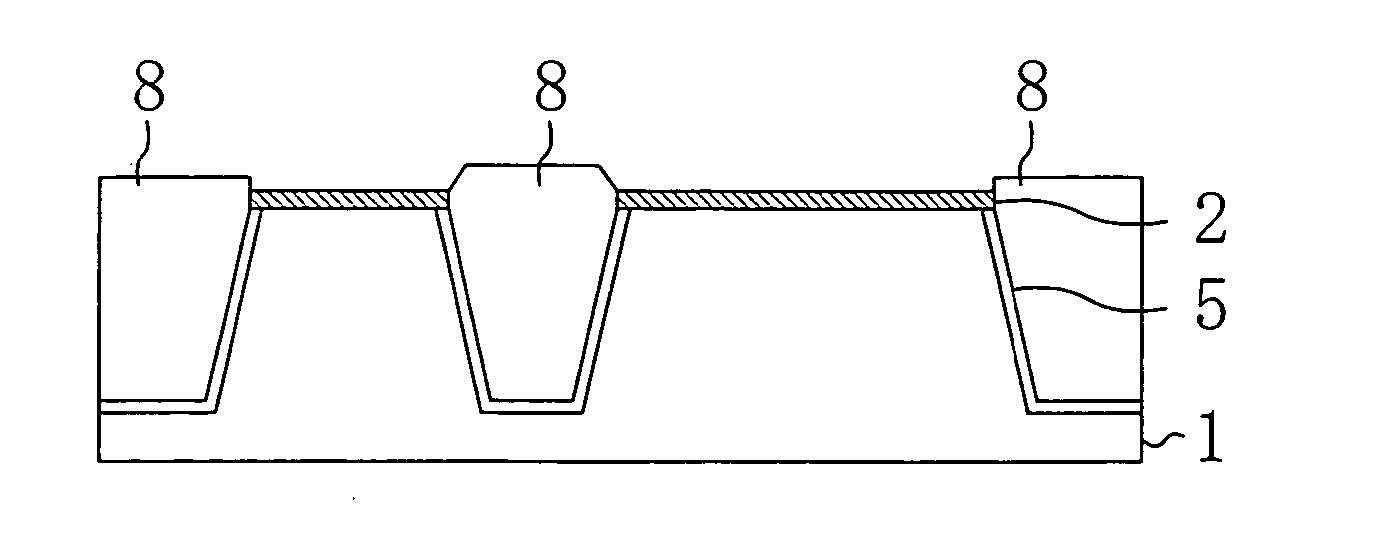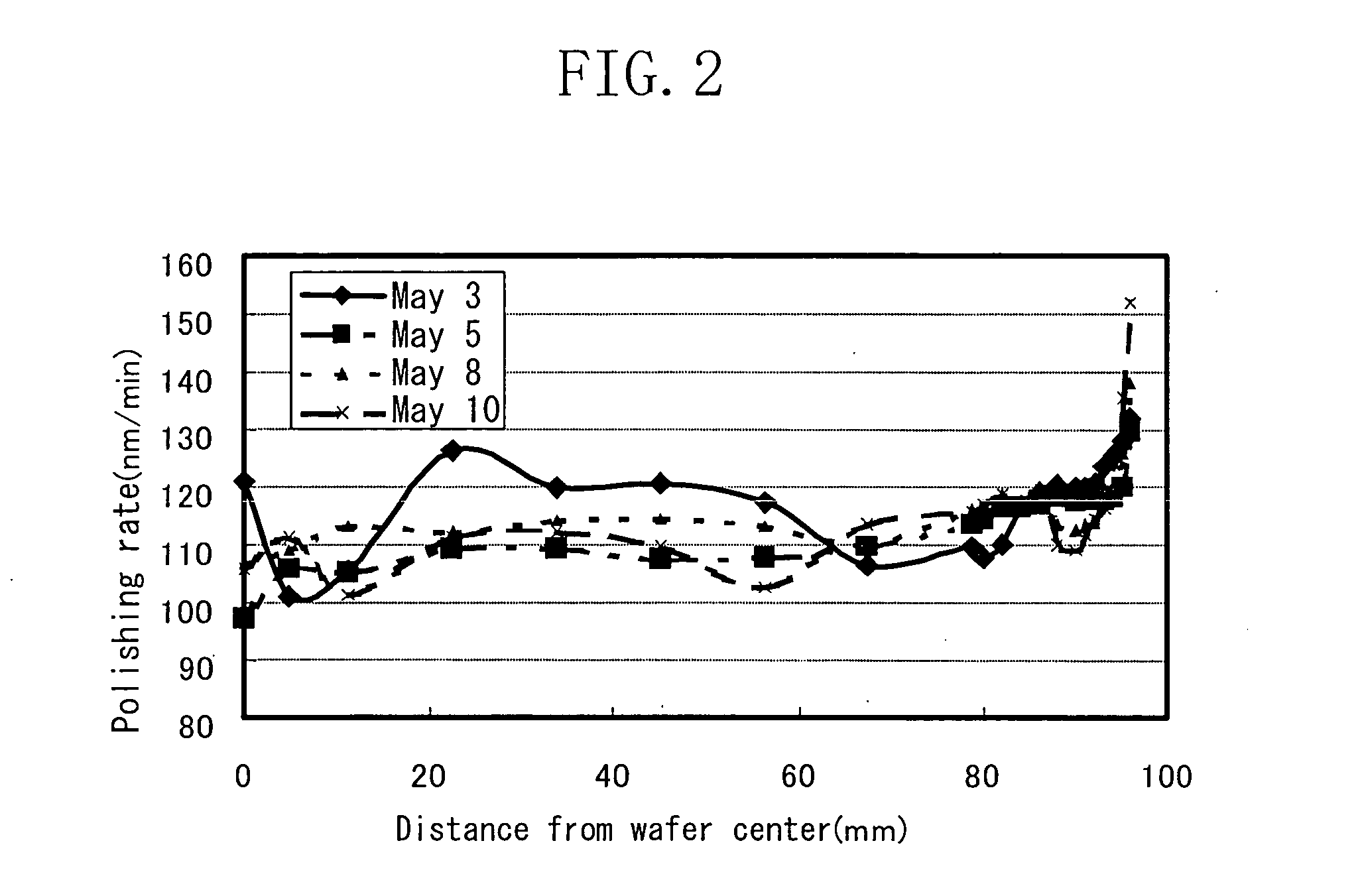Semiconductor device fabrication method and semiconductor device fabrication system
a semiconductor device and fabrication method technology, applied in semiconductor/solid-state device testing/measurement, manufacturing tools, lapping machines, etc., can solve the problem that the effect of the planarization obtained before the polishing process might be los
- Summary
- Abstract
- Description
- Claims
- Application Information
AI Technical Summary
Benefits of technology
Problems solved by technology
Method used
Image
Examples
Embodiment Construction
[0043] The following is the present inventors' thinking concerning reasons for the problem with the conventional method that variation is caused in the step height of the wafer surface during the polishing process, such that the effects of the planarization obtained before the polishing process are lost.
[0044] First, a polishing process by CMP will be discussed.
[0045]FIG. 1A is a schematic view of a polishing apparatus. The polishing apparatus 100 for performing a CMP process is furnished with a turntable 109, a polishing pad 110 attached onto the turntable 109, a carrier head 112 for holding the wafer to be polished, and a slurry dispenser 113.
[0046] The turntable 109 rotates about a rotation spindle A1. The wafer 111 is held by the carrier head 112. In this embodiment, a target film to be polished is formed on the wafer 111. The carrier head 112 has a rotation spindle A2 and rotates about the rotation spindle A2. The rotation spindle A2 presses the wafer 111 against the polishi...
PUM
| Property | Measurement | Unit |
|---|---|---|
| thickness distribution | aaaaa | aaaaa |
| semiconductor | aaaaa | aaaaa |
| thickness | aaaaa | aaaaa |
Abstract
Description
Claims
Application Information
 Login to View More
Login to View More - R&D
- Intellectual Property
- Life Sciences
- Materials
- Tech Scout
- Unparalleled Data Quality
- Higher Quality Content
- 60% Fewer Hallucinations
Browse by: Latest US Patents, China's latest patents, Technical Efficacy Thesaurus, Application Domain, Technology Topic, Popular Technical Reports.
© 2025 PatSnap. All rights reserved.Legal|Privacy policy|Modern Slavery Act Transparency Statement|Sitemap|About US| Contact US: help@patsnap.com



